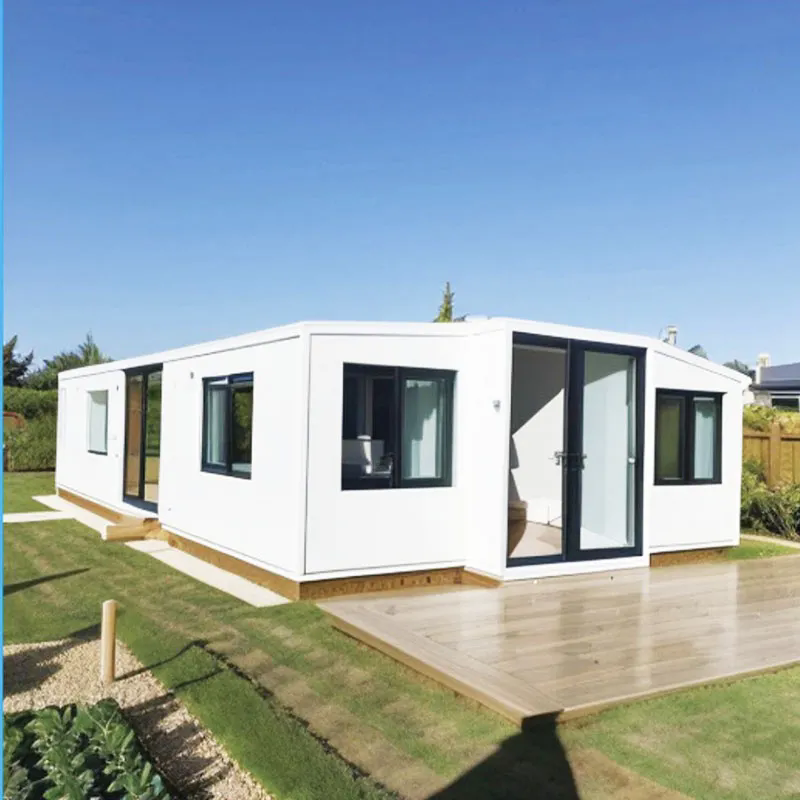Why Are Container Houses Becoming the Future of Sustainable Living?
2024-11-12
With the rising demand for eco-friendly and affordable housing, container houses have emerged as an innovative solution. But what exactly is it that makes container houses so popular? From cost-effectiveness to environmental impact, let’s explore why container houses are becoming a preferred option for modern, sustainable living.
1. What Is a Container House?
A container house is a home built using recycled shipping containers. These steel containers, originally used for transporting goods, are transformed into durable living spaces that can range from single-container tiny homes to multi-container, spacious residences. With the flexibility of stacking and arranging containers, these homes can be customized in endless ways, from minimalist designs to luxurious multi-level homes.
2. Why Are Container Houses Environmentally Friendly?
One of the biggest draws of container houses is their sustainability. Repurposing old shipping containers for housing reduces waste and repurposes materials that would otherwise be discarded or require energy-intensive recycling processes. By using containers that are no longer viable for shipping, these homes provide an eco-friendly alternative to traditional construction.
Additionally, building a container house requires fewer building materials than traditional homes. Steel containers are naturally durable, so minimal additional resources are needed to ensure structural integrity. With a smaller carbon footprint and less waste, container houses offer a way to build greener.
3. Are Container Houses Cost-Effective?
Container houses are known for being more affordable than conventional homes. While the cost varies depending on design and customization, they often require fewer materials, less time to construct, and minimal labor costs. Here’s why:
- Reduced Construction Time: The shell of the home (the container itself) is already built, saving time that would otherwise be spent on building walls, roofing, and the frame.
- Lower Material Costs: Since the structure is already there, you don’t need as many additional materials as you would with traditional building methods.
- Minimal Land Requirements: Many container houses are designed to be compact, which means they can fit on smaller plots of land, reducing land costs.
By investing in energy-efficient modifications and insulation, homeowners can create a comfortable living environment at a fraction of the usual cost.
4. How Durable and Safe Are Container Houses?
Shipping containers are designed to withstand harsh ocean conditions, so they’re inherently strong and durable. Made from high-quality steel, these containers provide a solid structure that is weather-resistant and can endure extreme environments. This durability translates into housing that is resilient to natural disasters like storms and even earthquakes, making them a safe choice for many regions.
However, proper insulation and ventilation are crucial to maintain comfort. Since steel can conduct heat and cold, adding insulation and temperature control features ensures the interior stays comfortable in both hot and cold climates.
5. What Customization Options Are Available for Container Houses?
One of the most attractive aspects of container houses is the flexibility they offer in design. Containers can be stacked, arranged, or modified to create unique layouts. Popular customization options include:
- Multiple Levels: By stacking containers, homeowners can build multi-story houses or expand their living space vertically.
- Open Floor Plans: Containers can be modified to create large, open spaces, removing internal walls to suit individual preferences.
- Outdoor Extensions: Decks, rooftop gardens, and patios can be added to increase outdoor space, enhancing the livability and appeal of the home.
- Eco-Friendly Features: Many container homeowners opt for green features like solar panels, rainwater harvesting systems, and energy-efficient windows, making their homes even more sustainable.
With the wide range of customization options, container houses can be designed to suit various styles, from modern industrial to cozy rustic.
6. Where Are Container Houses Most Popular?
Container homes have gained popularity worldwide, especially in areas where housing is costly or space is limited. They’re particularly common in urban areas where land is at a premium. In regions like the U.S., Europe, and parts of Asia, container houses have become popular not only as personal residences but also as vacation rentals, student housing, and even office spaces.
7. Are There Any Challenges with Container Houses?
While container houses have many advantages, they do come with some challenges. Key considerations include:
- Insulation and Temperature Control: As containers are made from steel, they can become hot or cold depending on the weather. Proper insulation is essential to create a comfortable interior.
- Building Codes and Permits: Local building codes may vary, and some areas have restrictions on using containers for housing. It’s essential to check regulations before starting a container home project.
- Initial Modifications: Modifying containers to create doors, windows, and insulation requires specialized work, and costs can increase if significant changes are needed.
Despite these challenges, with careful planning and the right expertise, container houses can be an efficient and rewarding housing choice.
In Conclusion
Container houses offer an innovative solution for those seeking sustainable, affordable, and versatile housing options. Their ability to be customized and adapted to various needs makes them suitable for a wide range of lifestyles, while their environmental benefits align with the growing demand for eco-friendly living. As more people explore alternative housing, it’s clear that container homes are here to stay, providing a unique and forward-thinking approach to modern life.



